Future of shrimp farming will be based on disease-resistant, fast-growing and pathogen-free shrimp stocks
When U.S. shrimp farmers had disease problems in the late 1980s, scientists at the Oceanic Institute in Hawaii developed a stock of shrimp that was specific pathogen free (SPF) to assist them. U.S. industry-wide use of SPF postlarvae (PLs) led to a doubling of the industry’s production in 1992 and through 1994 (Fig. 1).
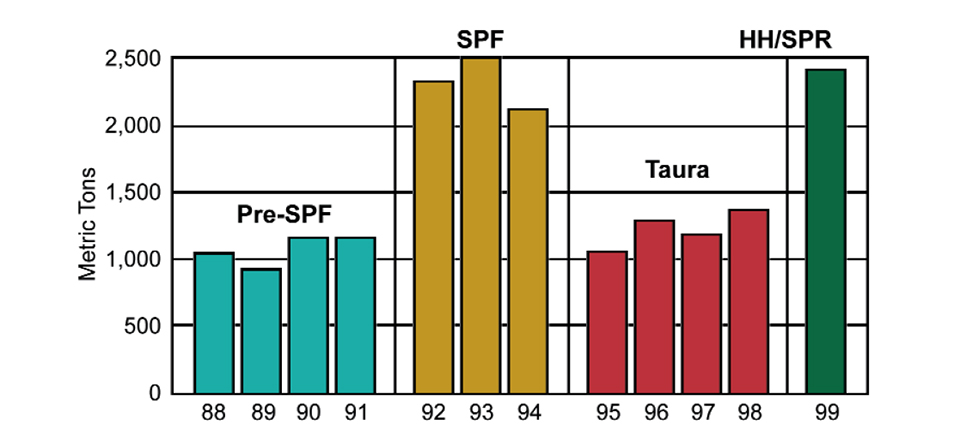
SPF in Ecuador
In a large commercial trial of SPF shrimp in Ecuador in 1993, more than 250 million SPF PLs produced from Hawaii-raised SPF broodstock were stocked in commercial ponds throughout Ecuador. The results were disastrous. The SPF shrimp were highly sensitive to Taura Syndrome Virus (TSV). SPF alone was not the answer.
Breeding for taura resistance
By 1995, TSV reached Texas in the United States, and the industry’s production dropped to half of the 1994 production (Fig. 1). Again, SPF stocks were highly susceptible to TSV.
High Health Aquaculture, Inc., a company formed in 1993 to commercialize Oceanic Institutes’s SPF research, set out to develop stocks that were both SPF and specific pathogen resistant (SPR) for TSV. In 1999, High Health’s first SPR stocks were used in Texas, and the state’s production reached its highest level since before TSV (Fig. 1).
In the spring of 2000, High Health completed its fourth round of selection for TSV resistance in Litopenaeus vannamei. One select L. vannamei group (G4 in Fig. 2) averaged 92 percent survival compared to 31 percent survival for the non-select group. One of the select groups achieved 100 percent survival in the TSV challenge.
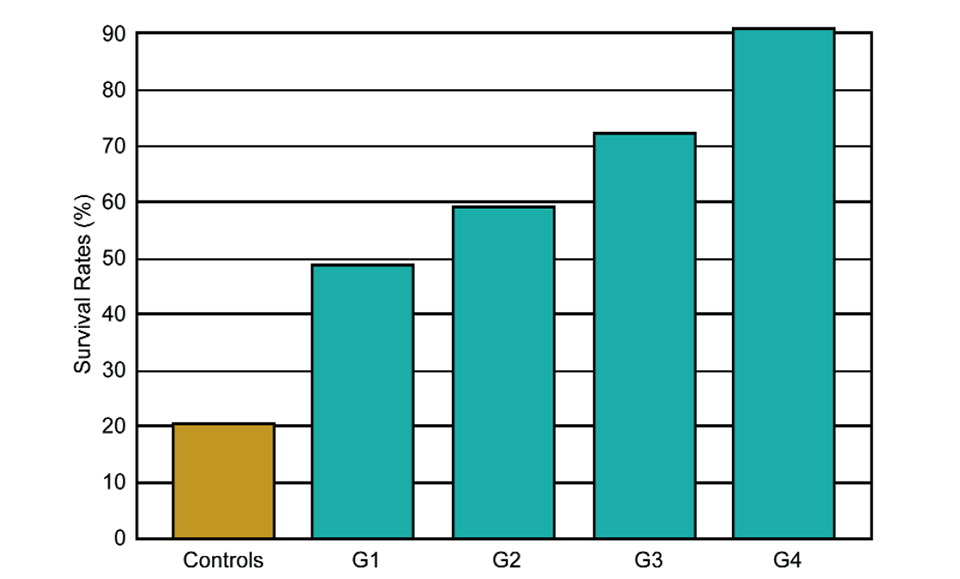
Over four generations of selection, the mean survival of select groups increased an average of 15 percent per generation (Fig. 2). These data demonstrate that breeding shrimp for virus resistance is feasible and that rapid progress is possible with a carefully designed program.
Breeding for fast growth
Dramatic improvements in shrimp growth rates also have been achieved. Outstanding growth rates to harvest sizes of 22 to 25 grams were commonplace in Texas in 1999 and 2000. Rapid growth of High Health animals in eastern Mexico in 2000 resulted in two crops produced there for the first time.
Breeding for WSSV resistance
Encouraged by success in breeding for TSV-resistance, High Health initiated efforts in 2000 to breed for resistance to White Spot Syndrome Virus. Inbred and out-crossed families of SPF/SPR L. vannamei were separately challenged with both TSV and WSSV. In the WSSV challenge, genetic variation was surprisingly similar to earlier efforts with TSV. TSV and WSSV challenge survivals were not correlated, but several groups had significant survivals in both challenges.
Zero-exchange, bio-secure systems
Recent successes using zero-exchange, bio-secure grow-out systems have reemphasized the importance of stocking disease-free PLs (McIntosh 2000). The only certain method for producing these is by using high-health broodstock in a biosecure hatchery. As use of bio-secure systems expands, so will the demand for disease-free shrimp.
Conclusion
Recent successes have proven that breeding shrimp for fast growth and virus resistance is both feasible and highly effective. The future of shrimp farming will be based on domesticated shrimp stocks that are disease-resistant, fast-growing and pathogen-free. This trend will make shrimp farming more environmentally responsible by limiting its reliance and impact on wild stocks, and eliminating global transport of pathogen-contaminated PLs and broodstock.
(Editor’s Note: This article was originally published in the December 2000 print edition of the Global Aquaculture Advocate.)
Now that you've reached the end of the article ...
… please consider supporting GSA’s mission to advance responsible seafood practices through education, advocacy and third-party assurances. The Advocate aims to document the evolution of responsible seafood practices and share the expansive knowledge of our vast network of contributors.
By becoming a Global Seafood Alliance member, you’re ensuring that all of the pre-competitive work we do through member benefits, resources and events can continue. Individual membership costs just $50 a year.
Not a GSA member? Join us.
Author
-
Jim Wyban, Ph.D.
High Health Aquaculture, Inc.
Hawaii, USA
www.hihealthshrimp.com[116,101,110,46,101,116,103,64,110,97,98,121,119]
Tagged With
Related Posts
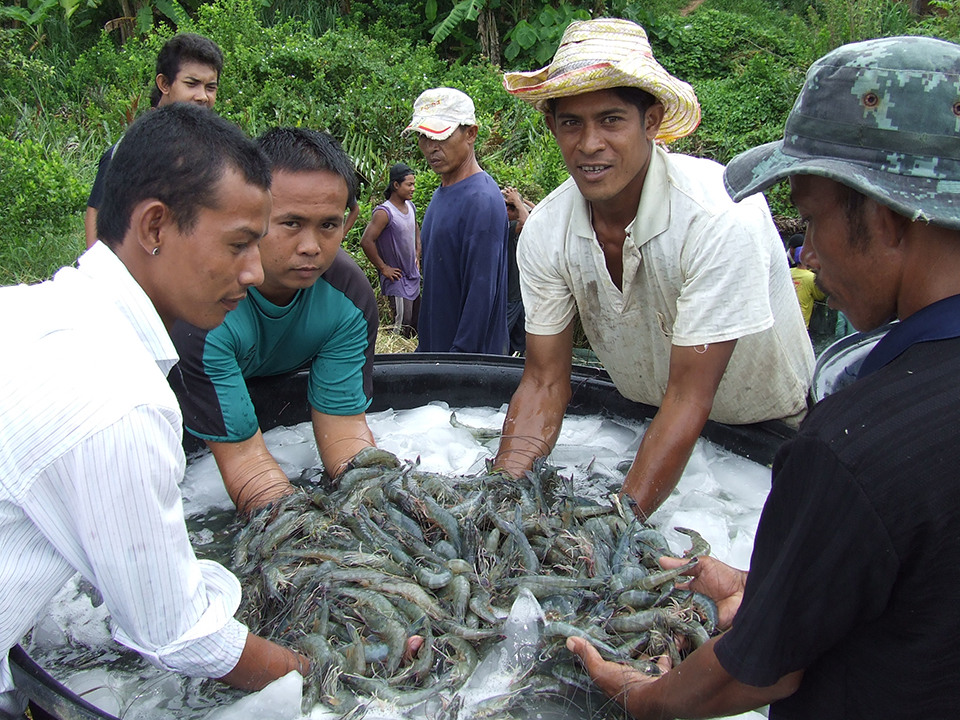
Health & Welfare
Blue alternative: High Health introduces SPF blue shrimp to Thailand
Blue shrimp are very similar to Pacific white shrimp, and can be raised under similar conditions. Blues grow faster and tolerate lower water temperatures.
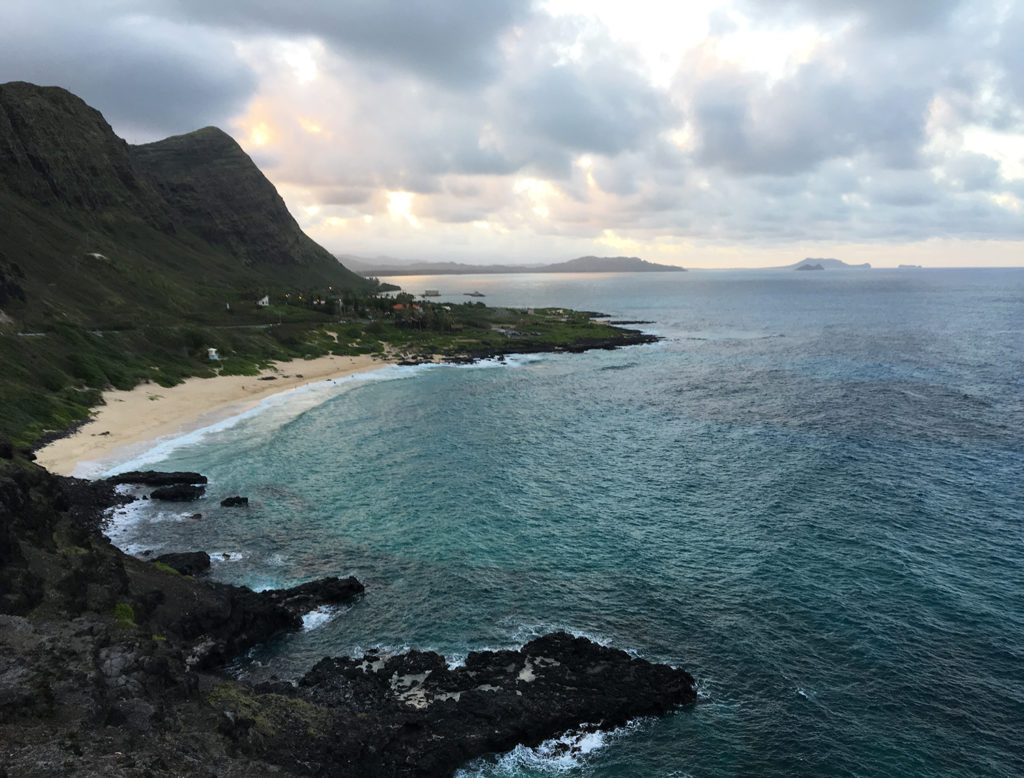
Health & Welfare
Born in Hawaii, SPF broodstock shrimp industry faces globalization
The next step for shrimp breeding will be developing animals that aren’t just disease-free, but increasingly resistant to multiple pathogens. The industry is globalizing, with suppliers setting up shop overseas. But its birthplace will always be Hawaii.
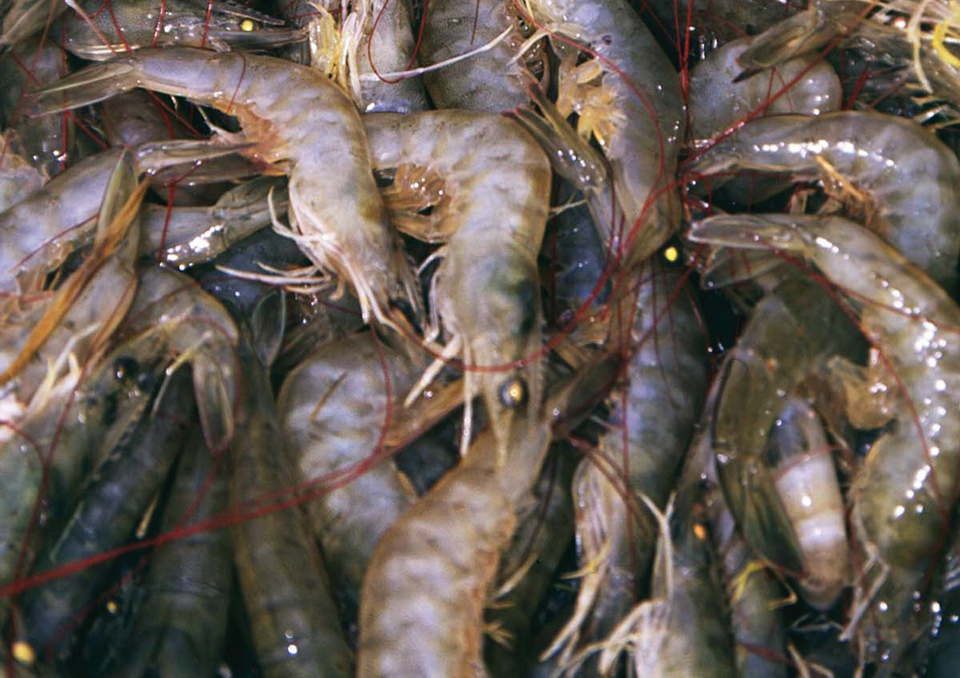
Health & Welfare
Domestication of Pacific white shrimp revolutionizes aquaculture
The development of specific pathogen-free Pacific white shrimp and breeding led to rapid adoption of the domesticated shrimp throughout the Western Hemisphere and Asia.

Health & Welfare
TSV challenges advance selective breeding in Pacific white shrimp
Results of ongoing studies demonstrate that selective breeding for both resistance to Taura Syndrome Virus (TSV) and fast growth in shrimp is achievable.



